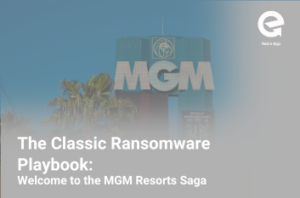Over the years we have met with hundreds of companies and their executive leadership teams. They all face similar challenges with employee engagement and internal communications. As companies grow, this challenge gets even more complicated as leadership tries to connect with thousands of employees spread out across multiple locations, factories, shifts, and even countries.
Internal communication is easily scattered, fragmented, and inconsistent because office employees and non-desk employees are not connected on a single, unified communication platform. While some employees have access to @company.com email, over fifty percent of the world’s critical workforce (non-desk workers) have never been digitally connected to their employers.
In search of employee connection, some corporations have turned to use consumer messaging apps, which bring entirely new issues to internal communications like compliance, legal risk, and company control of the dialogue. These “social messaging” solutions do not result in increased employee engagement but only add to the noise and confusion that already exists, all while leaving corporations open to legal issues.
So, why not just give every employee a corporate email address?
Great question. While email access for all may seem like a simple quick fix, there are five key reasons why it won’t work for your entire enterprise.
#1 COST
Typically, @company.com email starts at $5/user/month (such as Microsoft 365 and Gmail) and the cost increases with functionality, like if you want to provide forms, shift management, or training. Providing company email for all employees at a smaller organization may be a minimal “cost of doing business” expense, but it becomes a huge budgetary challenge with 1,000 or 10,000 or 100,000+ employees. For large enterprises, it is simply not economical to provide company email access to every employee.
#2 FOCUS
Email is a necessary evil for most corporate workforces. Your desktop workers likely use email on a daily basis for external and internal communication with clients, prospects, suppliers, co-workers, and more. Additionally, a company email address provides access to intranets and portals, and it provides the login key to nearly all enterprise designed productivity and collaboration tools.
But therein lies the problem for internal communication. Work email has become an aggregate for everything and has resulted in a dilution of attention and focus (if everything is important, nothing is a priority). This email overload has created a plethora of noise and encouraged an industry of spam. Recent data shows that the amount of productivity lost to emails is alarming and that with each email, up to 20 minutes is lost before the employee gets back to the task at hand.
Internal business-critical messages are most effective when distributed through a designed employee communication app. Without the noise of email, your messages receive the focused attention they require. They provide the right message, to the right person, at the right time.
#3 ACCOUNTABILITY
“Well, I sent it to them. Not sure if they got it though. Maybe it got stuck in their spam because I never heard back.”
How can you really know if your employees are getting your messages? Clicking the “send” button on a mass email never guarantees delivery. Additionally, the sender never knows if and when critical messages have been read.
Corporate leadership and operations teams have a strong desire for accountability. The best way to achieve this accountability is to give the “sender” assurance that every business message is delivered and know exactly when recipients have read messages. The corporate email channel will never provide the communication accountability that internal communication demands.
#4 BEHAVIOR
Your hourly workforce is a mobile-first workforce. These employees do not sit at a desk reading long paragraphs of text all day, and they require an entirely different approach for communicating and connecting. They do not want to login to an intranet portal on their mobile device and do not need collaboration platforms that desktop workers have become accustomed to using.
Hourly workers’ primary need is simple messaging and quick access to documents on a mobile device. Many of these workers have resorted to personal group texts (SMS) or instant messaging for communication because they have not been given a better tool. The lack of structure, as well as the compliance risk that these tools provide, should cause you to consider alternatives. Having your company’s private information shared on a non-secure channel that you cannot monitor or retain is a ticking timebomb.
#5 TURNOVER
Another significant hurdle with providing company email to ALL employees is dealing with the high turnover rate among the hourly workforce. The new retail sales associate, fast food team member, and part-time service employee all have something in common … the corporate office doesn’t know if they will stay employed for a week, a month, or a year.
Creating and canceling email accounts in an organization with a high employee turnover rate can bankrupt an IT department’s time and resources.
CONCLUSION:
Communicating with and engaging your non-desk workforce with an employee communication app has been proven by companies in every line of business, around the world to provide improved performance, employee retention, and impressive ROI. Isn’t it time you looked discovered how simple and easy it is to implement a solution that can have all your employees on the same page, communicating in a highly structured, secure, and empowering way?
Remember that communication with employees is the most impactful way to show them that they are appreciated. When you communicate effectively in every stage of the employee life cycle, your business will start to build what we call WorkTrust. This will help your company perform better and build a strong culture of retention.
Get more insight on how to communicate with your non-desk employees, here.


